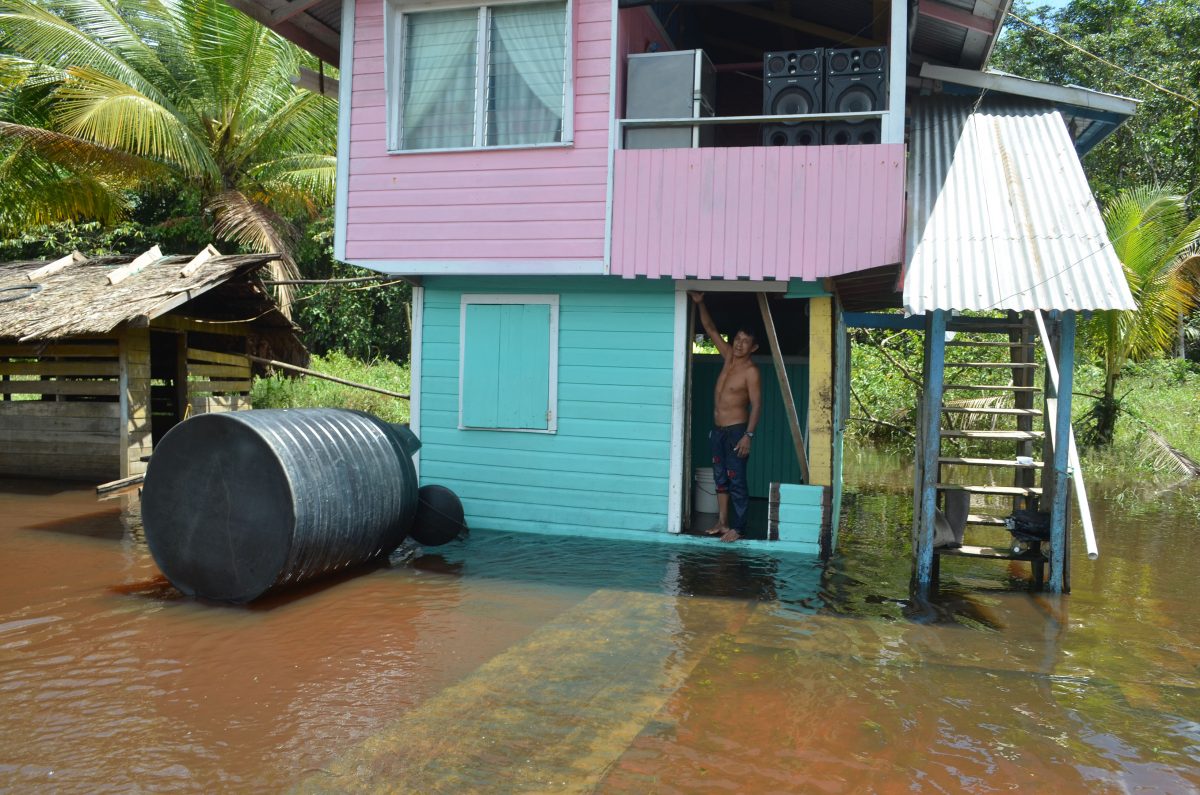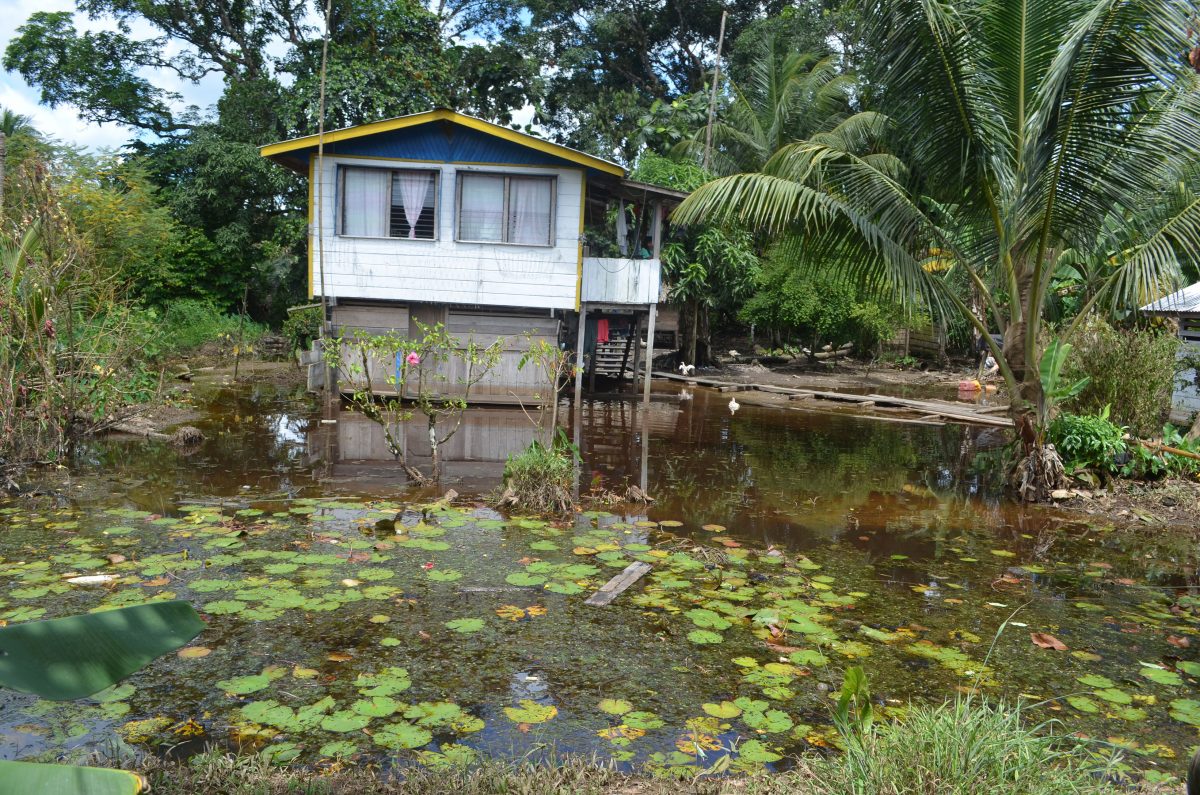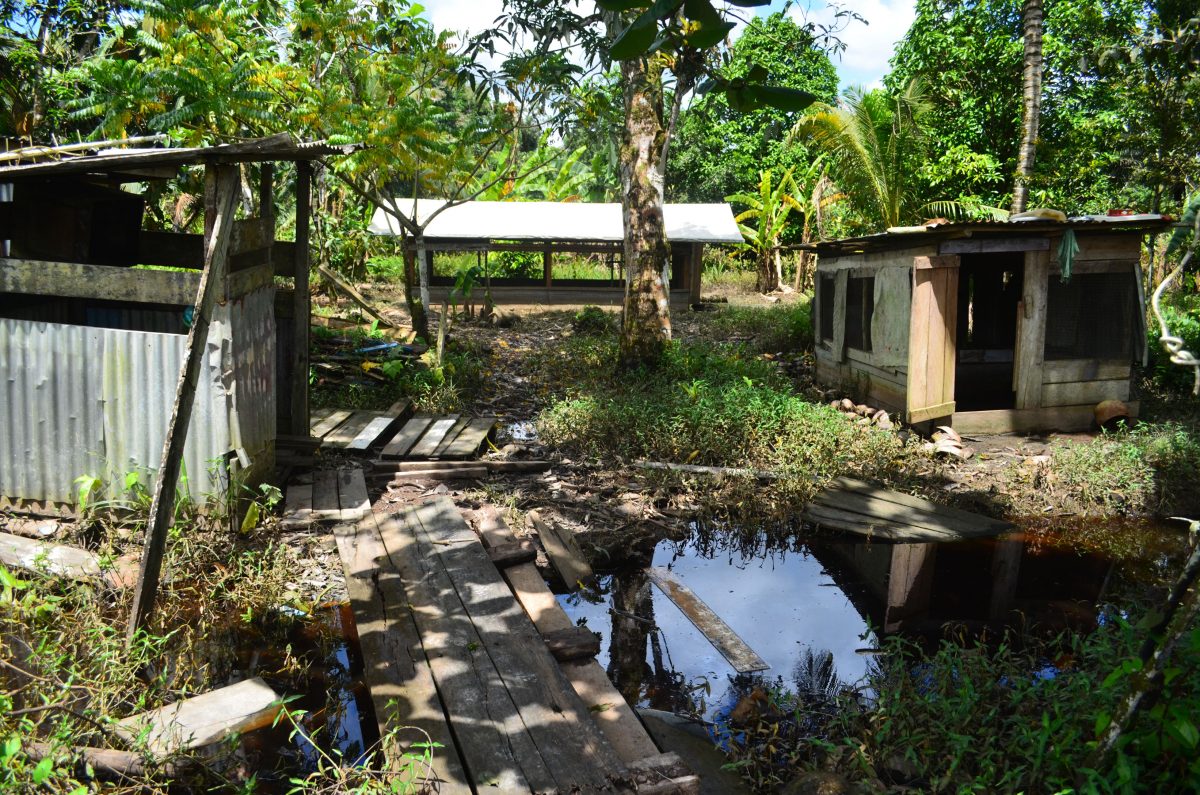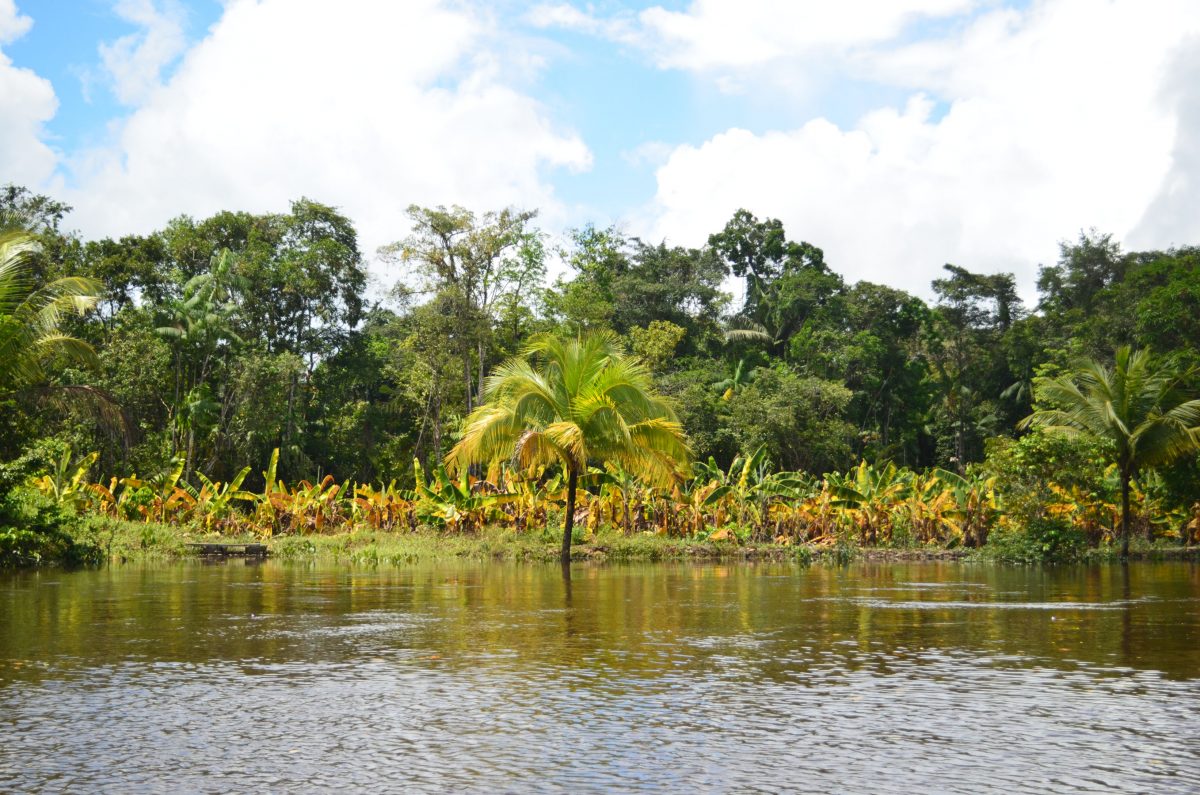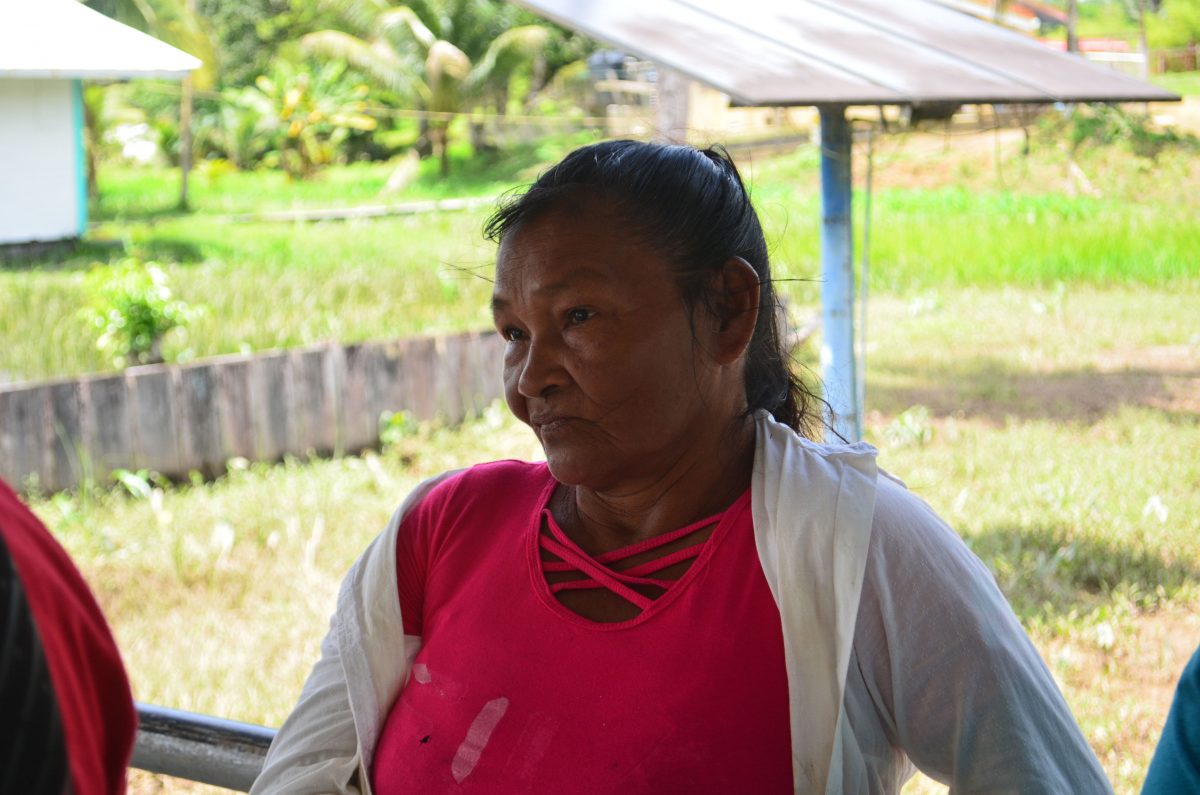“Some days all me and my husband eat is bare rice. We can’t catch no fish. We have no vegetables. Everything rotten and die from this flood,” Gloria Miguel says.
Miguel, a farmer, is one of many flood victims of St. Monica, Upper Pomeroon, Region Two, who are unsure of how they will make out in the coming months due to the devastation caused by recent flooding.
She told Stabroek News that when the floods came all of her produce was ready to be reaped. However, before she could do anything there was an estimated seven feet of water covering her farmlands.
“All the yams, eddoes, pears, golden apples, banana, plantains sapodilla, bora, everything — everything where I does get my lil change from – gone! The flood come and carry away everything,” said Miguel, one of dozens of Upper Pomeroon flood victims.
Though water levels have receded significantly from St. Monica and Karawab, Kabaka-buri and surrounding riverine communities in the Upper Pomeroon have all been battered by flooding caused by weeks of unrelenting rainfall.
Up to Monday, villagers in the flood-affected communities recounted stories similar to the one told by Miguel and they too said it has become difficult for them to source proper food.
Villagers noted that while they have received food hampers from the government, sourcing nutrient-rich and protein-packed foods has been difficult.
“We can’t get to catch fish because there is none in the river. It is not healthy to eat from the river, too, now; it is not clean. Our livestock died and now we don’t have anything else,” Miguel related.
The floods in the district have been called the worst in approximately four decades and for most of the villagers it is the first time they have had such an experience.
Uncertainty over food, villagers said, is one of their biggest concerns as it is unclear how they will survive for the next few months.
Miguel told this newspaper that a few days ago when her husband visited the farms, he attempted to reap some eddoes that appeared healthy but when he retrieved them “all loose up in his hands.”
Pauline Casimeiro, another resident of St Monica, pointed out that 32 families with farms on the left bank of community have been affected the worst as that section is lowest in the community.
Due to this, she explained, the devastation by the floods puts them in a tough position because they are unable to help each other.
“We are all in the same position. All the farms got duck from the flood and nobody get to save anything. We cannot say we will help the neighbour because we don’t even have for ourselves,” she pointed out.
‘I don’t know how’
Maureen Sibdhanie, a mother of five, has accepted that she will not be able to earn and supplement her family’s income for the next few months.
“It has been really difficult for us because we are accustomed to reaping what we plant and use for our family and sell what we don’t need but now we have nothing. I have to depend on my husband to work and provide for us,” she said.
She stated that produce in her farmlands remains on the trees but with the land waterlogged, they cannot reap and in most cases it has already rotted.
“It is three weeks our farms have been under water and even though the water is going down the farm is still with water. We cannot get to pick anything to cook or sell,” she explained.
In Kabakaburi, single-parent Mary Thorne has also lost everything they had been working for to the flooding.
“I don’t know how we will make out in the coming months. I am ready to plant again but we will have to wait a four to six months to reap, so we won’t get anything for now,” the crop and livestock farmer lamented.
When the floods hit, she was forced to sell her poultry after 25 drowned as the water started to rise.
“Every morning I wake up and look at this farm, I want to cry. Looking at it now, I want to cry because I start plant it myself and then my sons help but everything gone. Their farms over there is all gone. They, too, have losses. We all have losses,” she said as her voice wavered.
Carla Simon, whose family is heavily reliant on the produce from their farms, said there is little that can be done at this time.
However, she is worried like other flood-affected victims over the security of food over the next few months.
“Everything on our farm [is lost]. The floods come and wipe everything out bearing, not bearing, everything gone. We need great help to survive the next couple of months and to start back our farms,” she said, while noting that in the 23 years she lived in the community she had never experienced such flooding.
The woman said she and others are trying to provide for their families but if there is not continued assistance and an assessment of their dietary needs it will become much more difficult for them.
In Karawab, water levels were close to 14 feet high, and villagers said that they were surviving on hampers distributed by the government during a recent visit.
“We eat mostly fish here but with this flood we don’t have any fish now. Is like everything gone from our community with this flood because everybody farm die out and ain’t get to save anything,” Tressa Daniels said as noted that her investment of $500,000 into her farms went down the drain.
“Before the flood, I used the money I had save up and invest it to plant bananas and eddoes but the flood wash way everything. I didn’t even go to see if anything left on the farm because the water was so high. Like I sorry now because we have nothing left,” she said with distress evident.
Assistance
Meanwhile, St. Monica villagers said that they were promised assistance to have their farms empoldered to prevent flood waters from invading in the future.
“We were told that in two weeks the excavators will be here to build embankments and that will be good but we are still waiting on the government for that. Because the water comes from the canal, which is at the back of our farms, and gushes in,” Sibdhanie said. She noted that the community on the lower end has two kokers but they have not been functioning properly and if this is remedied it will bring some assistance during floods and high tides.
Another resident, Linden Cortman of Karawab, also appealed for assistance from government to dig a canal on the right bank of Karawab. If this is done, he said, not only will he be in a position to move to higher grounds but there will be space for seven more families to relocate.
“This water come so high my house here is shifted a little. I am ready to move up the hill but I am asking that they assist with digging the canal. If I do it from my pocket, it will cost like $600,000. If I pay for that I will have to start back to save for a new home,” he explained.
Several other residents have also indicated their intention of moving to higher ground in a bid to escape the devastation of floods.
The affected residents said that they remain hopeful that President Irfaan Ali will keep his promise to assist them during this period.
During Ali’s visit to the flood-hit communities last week, he promised “to do everything to secure back your livelihood. We are going to do everything to get you back to the farmland; we are going to do everything to help back the household.”
